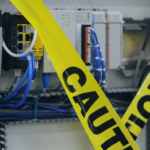7 Reasons Why You Should Report Near Misses
Accidents happen in the workplace, but many times, workers narrowly avoid incidents that could have caused serious injury or even death. A near miss, also referred to as a “close call,” a “near accident,” or an “injury-free event,” is an unplanned event that did not result in injury, illness, or damage but had the potential to do so. An example of a near miss is when a worker slips on a spill but grabs a handrail just in time, preventing their fall. While the accident was avoided, the incident should never have happened in the first place.
In many cases, these incidents aren’t reported, especially when employees fear being blamed. Even if no injury or damage was incurred, it is still necessary to report it. Here are 7 reasons why:
- A near miss this time might not be a near miss next time. Research has shown that major incidents are typically preceded by near misses. These incidents could have been avoided had the near miss been reported and addressed. If near misses are not adequately addressed or discussed, it can lead to riskier behavior in the future due to lower perceived risk or a belief that the original perceived risk was overestimated.
- Making a habit of reporting near misses promotes a culture of safety. Because most safety protocols are reactive rather than proactive, precautionary steps aren’t taken until an incident forces a company to do so. Near-miss incidents can be overlooked since there was no harm to the employee or damage to equipment or buildings. As a result, the opportunity is lost to prevent future hazards, leaving workers at risk.
- Creating a culture in which near-miss reporting is encouraged helps avoid the blame game. If employees know they will not be in trouble for reporting a near miss, these incidents can be used as learning experiences and opportunities to promote worker safety going forward.
- Investigating near miss incidents helps to identify the weaknesses in the system that caused them in the first place. This will help safety managers to put safeguards in place for future use.
- Implementing a near miss reporting system can capture valuable data. This data can be used for statistical analysis, correlation studies, trending, and performance measurements, preventing future accidents.
- Involving workers in the reporting process provides an opportunity for employee participation. This is key to creating a successful safety management system and an open employee culture. Feeling comfortable to share with coworkers is imperative for responsible workplace safety.
- Establishing a near miss reporting culture in which supervisors encourage worker input benefits every level of the organization. In addition to encouraging workers to be personally invested in their own safety and that of their fellow workers, companies can take a proactive approach to safeguarding employees and equipment while promoting higher worker morale and a healthy company safety culture.



